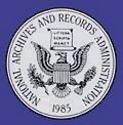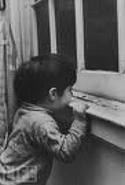What is a Lead Paint Hazard (Paint-Lead Hazard)?
 Lead Paint Hazard is a legal term. The following information is from the Electronic Code of Federal Regulations, Title 40: Protection of Environment, Part 745—Lead-Based Paint Poisoning Prevention In Certain Residential Structures
Lead Paint Hazard is a legal term. The following information is from the Electronic Code of Federal Regulations, Title 40: Protection of Environment, Part 745—Lead-Based Paint Poisoning Prevention In Certain Residential Structures
§ 745.65 Lead-based paint hazards.
(a) Paint-lead hazard:
A paint-lead hazard is any of the following:
(1) Any lead-based paint on a friction surface that is subject to abrasion and where the lead dust levels on the nearest horizontal surface underneath the friction surface (e.g., the window sill, or floor) are equal to or greater than the dust-lead hazard levels identified in paragraph (b) of this section.
(2) Any damaged or otherwise deteriorated lead-based paint on an impact surface that is caused by impact from a related building component (such as a door knob that knocks into a wall or a door that knocks against its door frame.
 (3) Any chewable lead-based painted surface on which there is evidence of teeth marks.
(3) Any chewable lead-based painted surface on which there is evidence of teeth marks.
(4) Any other deteriorated lead-based paint in any residential building or child-occupied facility or on the exterior of any residential building or child-occupied facility.
(b) Dust-lead hazard:
A dust-lead hazard is surface dust in a residential dwelling or child-occupied facility that contains a mass-per-area concentration of lead equal to or exceeding 40 µg/ft2 on floors or 250 µg/ft2 on interior window sills based on wipe samples.
(c) Soil-lead hazard:
A soil-lead hazard is bare soil on residential real property or on the property of a child-occupied facility that contains total lead equal to or exceeding 400 parts per million (µg/g) in a play area or average of 1,200 parts per million of bare soil in the rest of the yard based on soil samples.
(d) Work practice requirements:
Applicable certification, occupant protection, and clearance requirements and work practice standards are found in regulations issued by EPA at 40 CFR part 745, subpart L and in regulations issued by the Department of Housing and Urban Development (HUD) at 24 CFR part 35, subpart R. The work practice standards in those regulations do not apply when treating paint-lead hazards of less than:
(1) Two square feet of deteriorated lead-based paint per room or equivalent,
(2) Twenty square feet of deteriorated paint on the exterior building, or
(3) Ten percent of the total surface area of deteriorated paint on an interior or exterior type of component with a small surface area.

 Looking for accurate information about the EPA RRP rule?
Looking for accurate information about the EPA RRP rule? 


